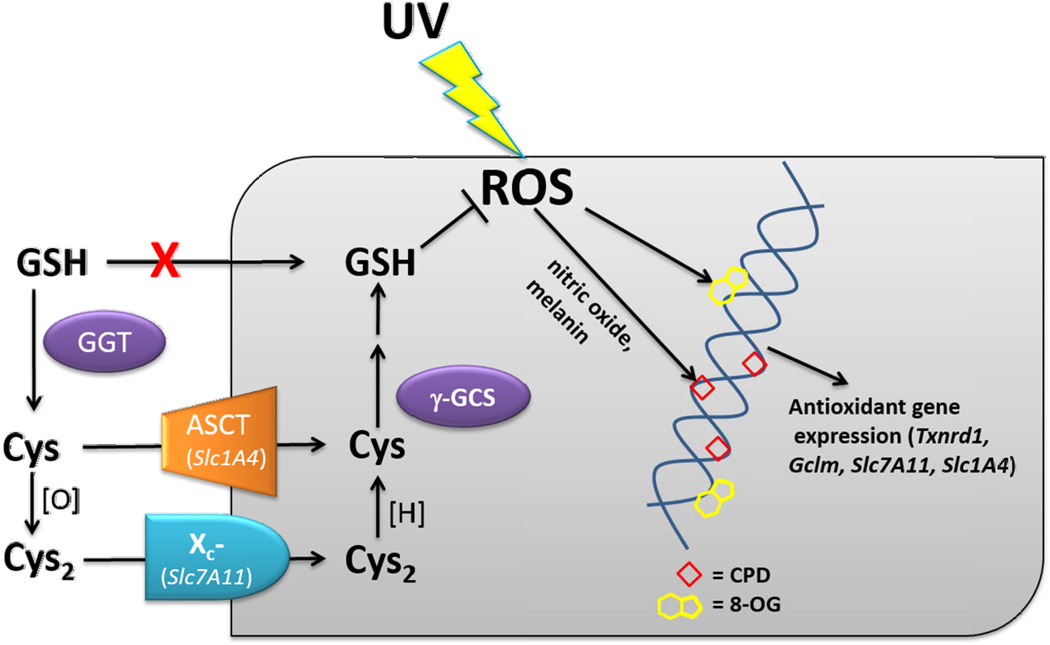Fig. 1.
NAC metabolism and biomarkers of oxidative stress. NAC is metabolized to cysteine (Cys), which is a glutathione (GSH) precursor. GSH cannot cross cell membranes, but is transformed into Cys and cystine (Cys2) by γ-glutamyl transpeptidases (GGT). Cys and Cys2 enter cells via the amino acid transporters ASCT (Slc1A4) and Xc- (Slc7A11), respectively. Intracellularly, Cys can be reduced by reductases such as TR-1 (Txnrd1) and converted to GSH by γ-glutamylcysteine synthase, the modifier subunit of which is encoded by Gclm and upregulated in UV-irradiated melanocytes and nevi. Reactive oxygen species (ROS) induced by ultraviolet (UV) radiation can lead to formation of 8-oxoguanine (8-OG) and cyclobutane dimers (CPD, see Discussion) in DNA, and modifies the expression of genes such as Txnrd1, Slc1A4, Slc7A11 and Gclm (which encode the proteins TR-1, ASCT, Xc-, and Gclm).

